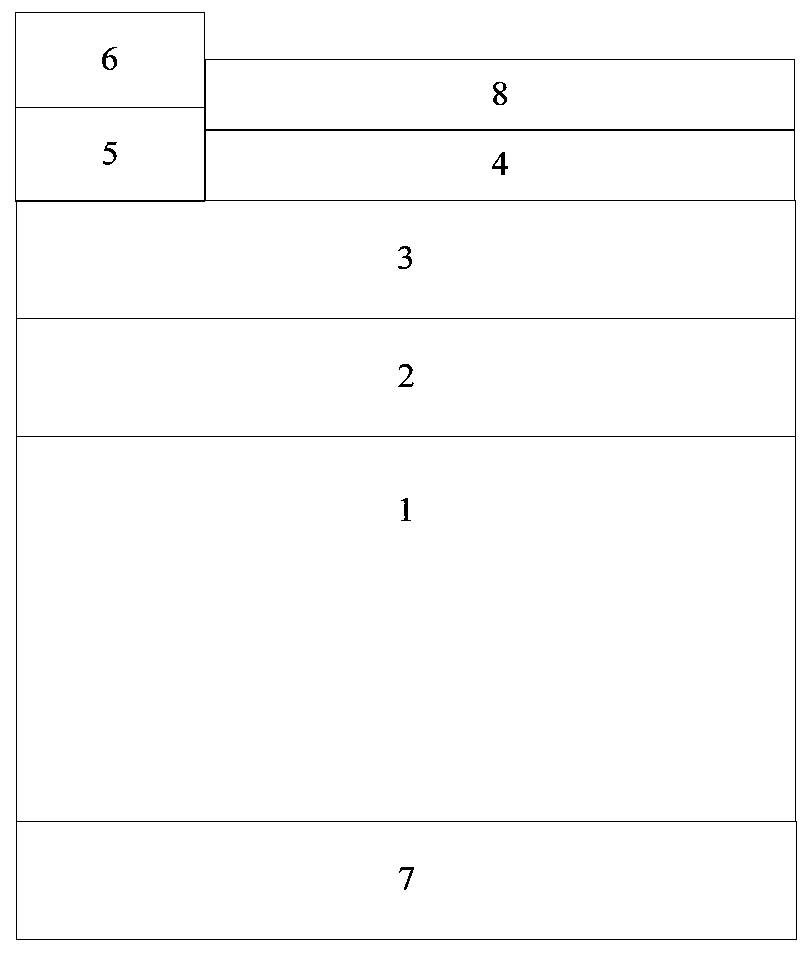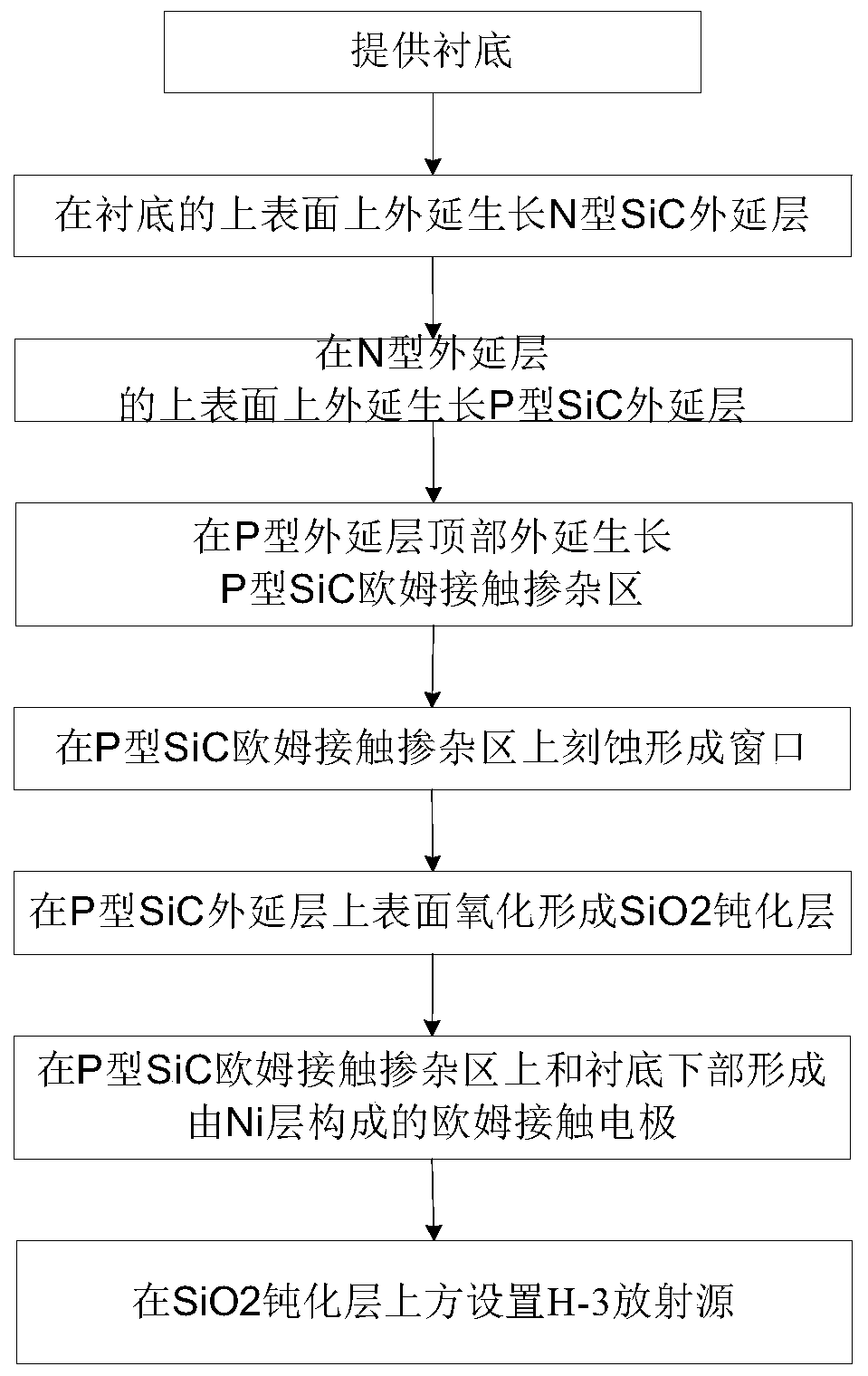A kind of h-3 silicon carbide pn type isotope battery and its manufacturing method
An isotope battery, H-3 technology, used in circuits, electrical components, and obtaining electrical energy from radioactive sources, etc., can solve the recombination loss of radiation-generated carriers, the shallow electron range, and the unavoidable loss of radiation-generated carriers. and other problems, to achieve the effect of improving energy conversion efficiency and packaging density, wide depletion region thickness, and high promotion and application value.
- Summary
- Abstract
- Description
- Claims
- Application Information
AI Technical Summary
Problems solved by technology
Method used
Image
Examples
Embodiment 1
[0058] A kind of manufacture method of H-3 silicon carbide PN type isotope cell, comprises the following steps:
[0059] Step 1, providing a substrate 1 composed of an N-type doped SiC substrate;
[0060] Step 2. Using chemical vapor deposition to epitaxially grow on the upper surface of the substrate described in step 1 with a doping concentration of 4×10 17 cm -3 , an N-type SiC epitaxial layer 2 with a thickness of 1.8 μm;
[0061] Step 3: Using chemical vapor deposition to epitaxially grow the upper surface of the N-type SiC epitaxial layer 2 with a doping concentration of 3×10 16 cm -3 , a P-type SiC epitaxial layer 3 with a thickness of 0.10 μm;
[0062] Step 4. Epitaxially grow the upper surface of the P-type SiC epitaxial layer 3 with a doping concentration of 1×10 by chemical vapor deposition. 19 cm -3 , a P-type SiC ohmic contact doped region 5 with a thickness of 0.2 μm;
[0063] Step 5, using reactive ion etching to etch away part of the P-type SiC ohmic con...
PUM
| Property | Measurement | Unit |
|---|---|---|
| thickness | aaaaa | aaaaa |
| thickness | aaaaa | aaaaa |
| thickness | aaaaa | aaaaa |
Abstract
Description
Claims
Application Information
 Login to View More
Login to View More - R&D
- Intellectual Property
- Life Sciences
- Materials
- Tech Scout
- Unparalleled Data Quality
- Higher Quality Content
- 60% Fewer Hallucinations
Browse by: Latest US Patents, China's latest patents, Technical Efficacy Thesaurus, Application Domain, Technology Topic, Popular Technical Reports.
© 2025 PatSnap. All rights reserved.Legal|Privacy policy|Modern Slavery Act Transparency Statement|Sitemap|About US| Contact US: help@patsnap.com



